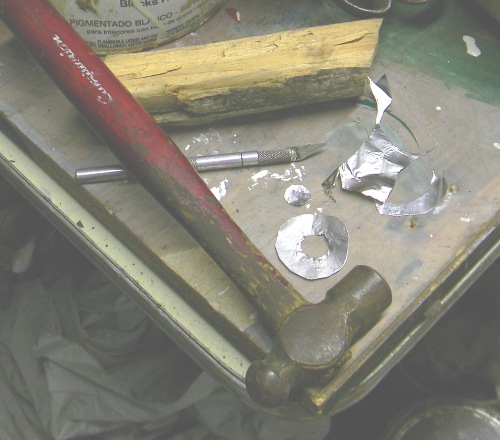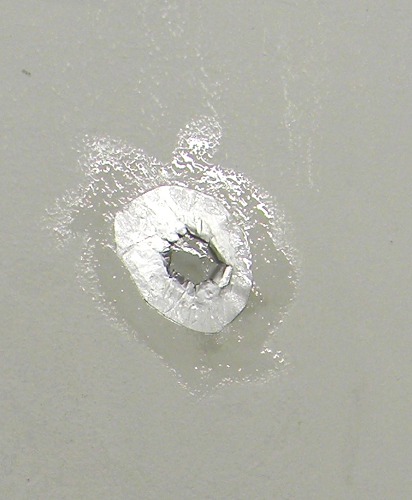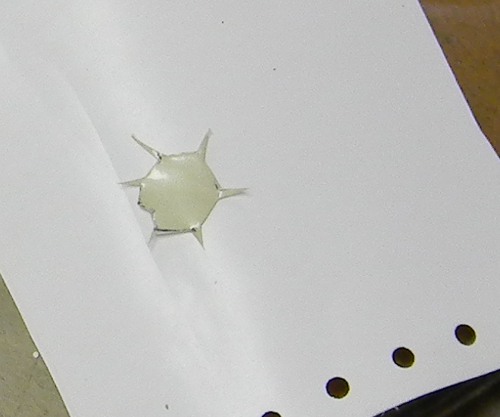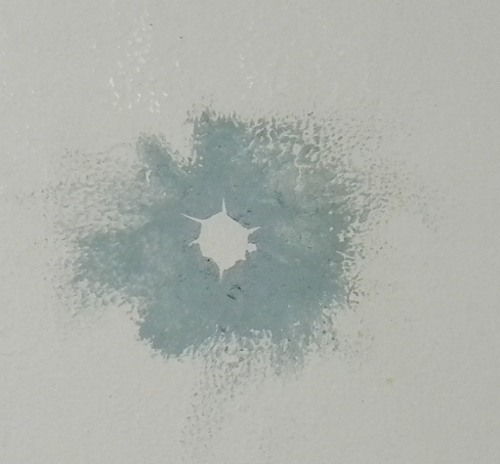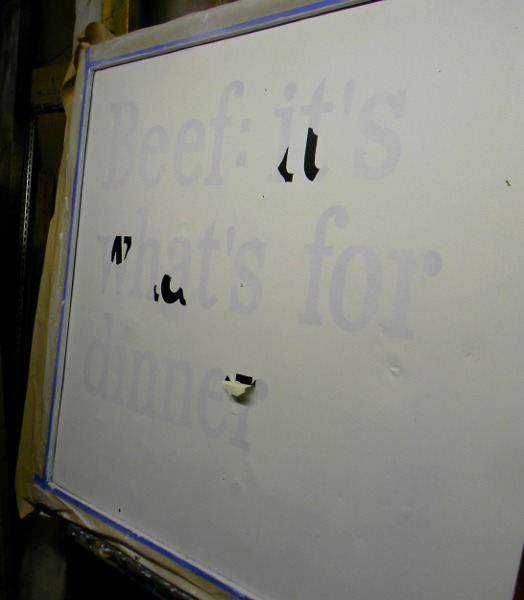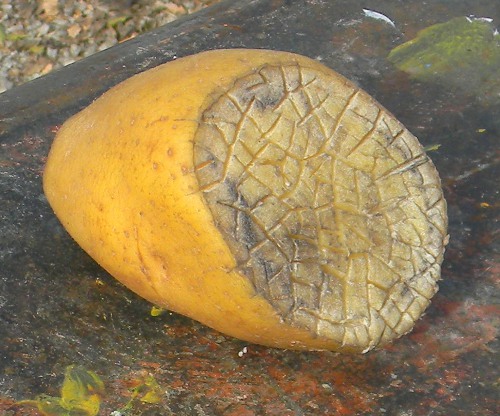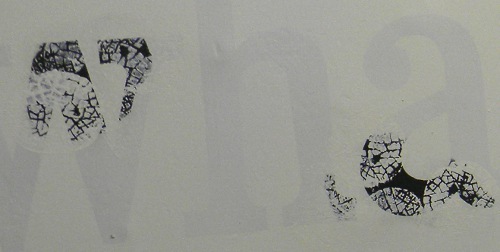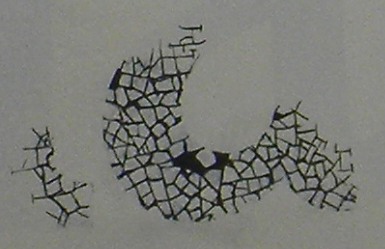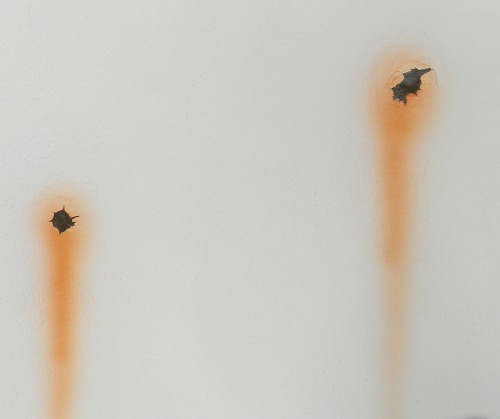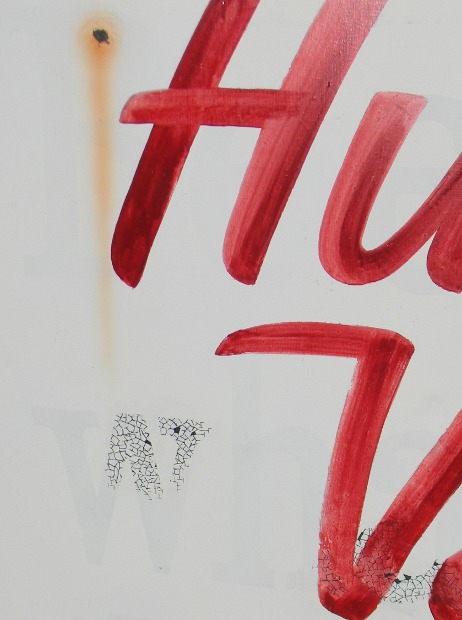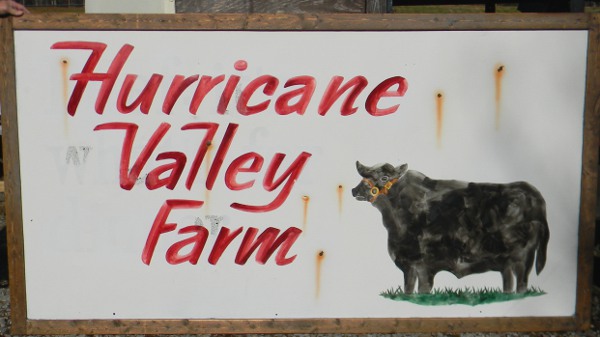You are hereSuccessful experiments on sheet steel
Successful experiments on sheet steel
I was asked to repaint a sheet steel sign for a cattle farmer in Tennessee. It had been previously painted a few times, and some of the old graphics were showing through. The previous owners were also involved in beef cattle. One was a butcher, but they had a simple picture of a bull painted on the sign. This all gave me an idea to have a little fun and surprise the current owner.
I decided to paint the sign twice; once with a famous advertising slogan: "Beef it's what's for dinner", then, top coat it with white and the current name. The white had to be translucent enough to let the slogan show through. Below, I'll describe the experiments, in no certain order.
For years I've wondered if I can simulate the look of a chip in the paint; the kind where the edges of the remaining paint are slightly lifted up. I thought that I would use a thin, non rusting material to make the edges. I decided to use aluminum foil. In one picture, you can see where I used the peen of a hammer to rub the foil in a way that made it stretch in the middle; and therefore not lay flat. I used the X-acto knife to cut the shape. I glued it onto the sign with epoxy; I had previously made a small mound of filler here, so that it would help lift the fake paint edges. Then I used glazing compound (a fine body filler) to smoothly transition the surface up to the edge of the fake chip place. You can see where I lifted and curled the foil.
As it turns out, that method works, but is more work than is needed. A simpler way to get the desired dimension is to use a piece of adhesive sign vinyl, cut to the shape of the chip. You can see that done from ivory colored vinyl in one of the pictures. The spiky little fake cracks are important. This vinyl is temporarily applied, and the same body filler is used around the edges. The vinyl is removed when the filler starts to firm up.
When I applied the top white coat over the slogan; I didn't completely cover the lettering. I wanted to try a fake crackle method. The usual methods wouldn't work, since they rely on two layers of paint, and I wanted the lettering to show through. I have seen old signs where the top layer of paint is cracking this way, and letting old graphics show through. I pondered it for awhile, then decided to try the old potato stamp method. The reason for a potato instead of some other stamp material was important: I could cut criss-cross slices into the surface; and as it dried, the slices would get wider, since the squares between them were shrinking. Well, nice theory, but only so-so results. It helped for sure, but I dad to come back with a skinny brush to true things up. You can see where I left some black squares showing; this is where a flake of dried paint would have fallen off.
Actually, the vinyl and filler fake chip places were added at the same time as the slogan, so that they would be painted white at the same time as the final coat. The red lettering was done with my usual distress method, so was the bull. I took a fine pointy brush and painted dark brown into the middle of the chips, including going out in the fake cracks around the chips. Bear in mind that this sign goes in a living room, above a sofa; so it will encounter close scrutiny. Finally, I put orange-brown paint into an airbrush, and made streaks running down from the chips. The slogan shows up nicely; the reson it doesn't show in the final picture is that the photo was taken outside on a very bright sunny day, and the camera wouldn't pick up the lower layer of paint effect.
